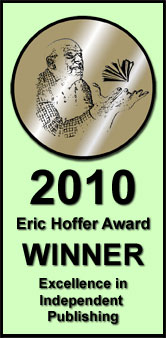An articulate and inspiring advocate for mental health, Carlton Davis speaks and provides workshops at meetings and conferences to bring insight, compassion, and a dose of reality from someone who has “been there” to the complicated issues of recovery that challenge individuals, families, and society’s systems.
Mr. Davis has spoken to twelve NAMI Chapters, one in Carlisle, Pennsylvania, and eleven in California including: Glendale, San Gabriel Valley, Temecula, Long Beach, Riverside, Pomona Valley and West Los Angeles. He has also presented to the Wilshire Rotary Club in Los Angeles. In April, 2009 he gave a workshop at the California Association of Social Rehabilitation Agencies (CASRA) conference in San Mateo, California; and two speeches at the University of Wyoming as part of a mini-course sponsored by Active Minds on Campus, the national student mental health advocacy organization. In May 2010 Mr. Davis travels to Manchester in the United Kingdom to provide a lecture at the International Network of Philosophy and Psychiatry.
Carlton Davis, architect and artist, is a graduate of Yale University and the University of London. In his private architectural practice he designed the North Hollywood Subway for the Homeless and several renovations of SRO hotels in Skid Row. He was also a Lecturer in Architecture at UCLA and Woodbury University and an assistant professor at the University of Wyoming. He taught drawing at Otis Art Institute and is well known for his writing in art and architecture periodicals. He exhibited his art work at AAA gallery, Exile, The Art Dock, and The Tanzmann Associates.
Mr. Davis has accomplished these impressive tasks while also fighting mental illness. In 2009 he published his book, bipolar bare, my life’s journey with mental disorder-a memoir. This work chronicles his life story with bipolar disorder – how it first manifested, the addictions it pulled him into, and the recovery he finally found.
Carlton Davis will talk about many topics related to the issue of mental health from the client point of view. His presentations have included speeches about bipolar disorder, drug addiction; major depression, mania, suicide, recovery and creativity and madness. His basic talk is entitled “Seesawing on the bipolar coaster, riding the edge of madness with two selves” where he presents his own theory of bipolar disorder. Based on his memoir bipolar bare, Mr. Davis communicates a unique viewpoint about the illness. He believes that the illness is a divergence of two selves residing in one body. To illustrate this idea Mr. Davis brings to speech a broad perspective one filled with images from art and references from artists, writers, and philosophers. Humor too is used for illumination of the various aspects of the condition. The great gift that bipolar disorder can bestow up the person afflicted is explored with reference to such famous suffers as Leornado Da Vinci, Vincent Van Gogh, Sylvia Plath, and Abraham Lincoln.
Contact Carl to Speak at your Next Event:
Carlton Davis
371 Arroyo Terrace
Pasadena, CA 91103
Tel: 626-840-7997
Email: zelapolarbear@earthlink.net
Here’s what people are saying….
“Hope is certainly stronger when there is some tangible reason to hope. Carl Davis is wonderful testimony to the fact that recovery is possible.”
Marty Giffen, President
NAMI, San Gabriel Valley
“Many thanks for your very candid, illuminating talk on bipolar disorder. You certainly held people’s interest, and rightly so. How great it is that you have turned such trauma and loss into a compelling story that gives hope to others.”
Dick Bunce, President
NAMI, Pomona Valley
“The CASRA workshop was paced wonderfully and Carlton’s story was genuine and engaging. He was so candid and open. It was amazing to hear his story of success and recovery.”
Picha Watkins
Momentum Mental Health
“Very entertaining! The CASRA workshop was at times funny, at times made you look in at yourself, and at times makes you look into the future.”
Ryan Nestman,
Community Support Worker, Contra Costa County, CA
“I really enjoyed the frankness of the presentation. The art and the power point helped illustrate the different points.”
Janet Van Scoyk,
Student University of Wyoming
.




